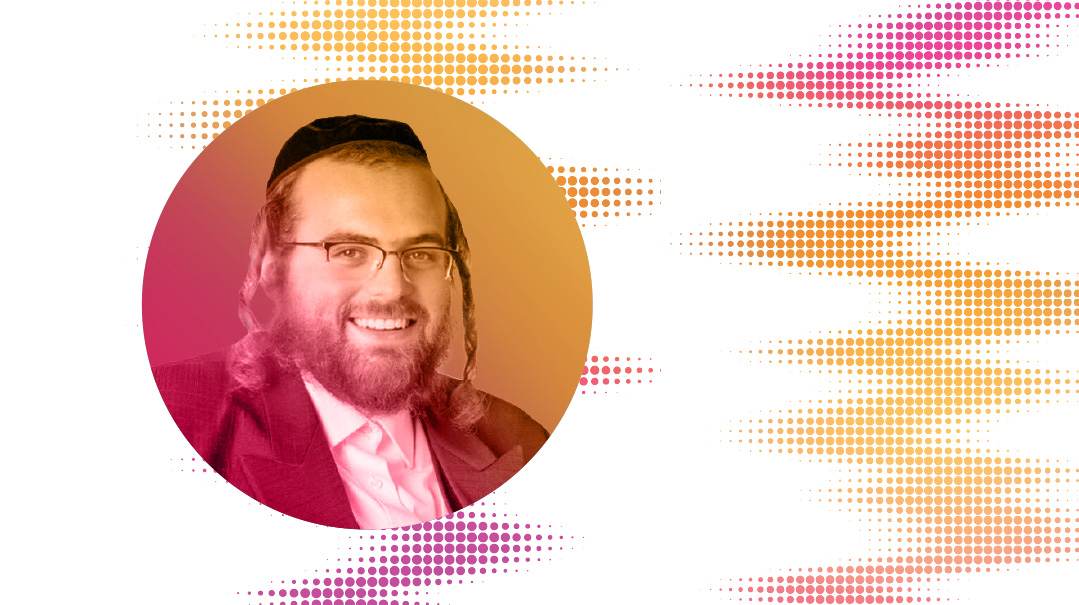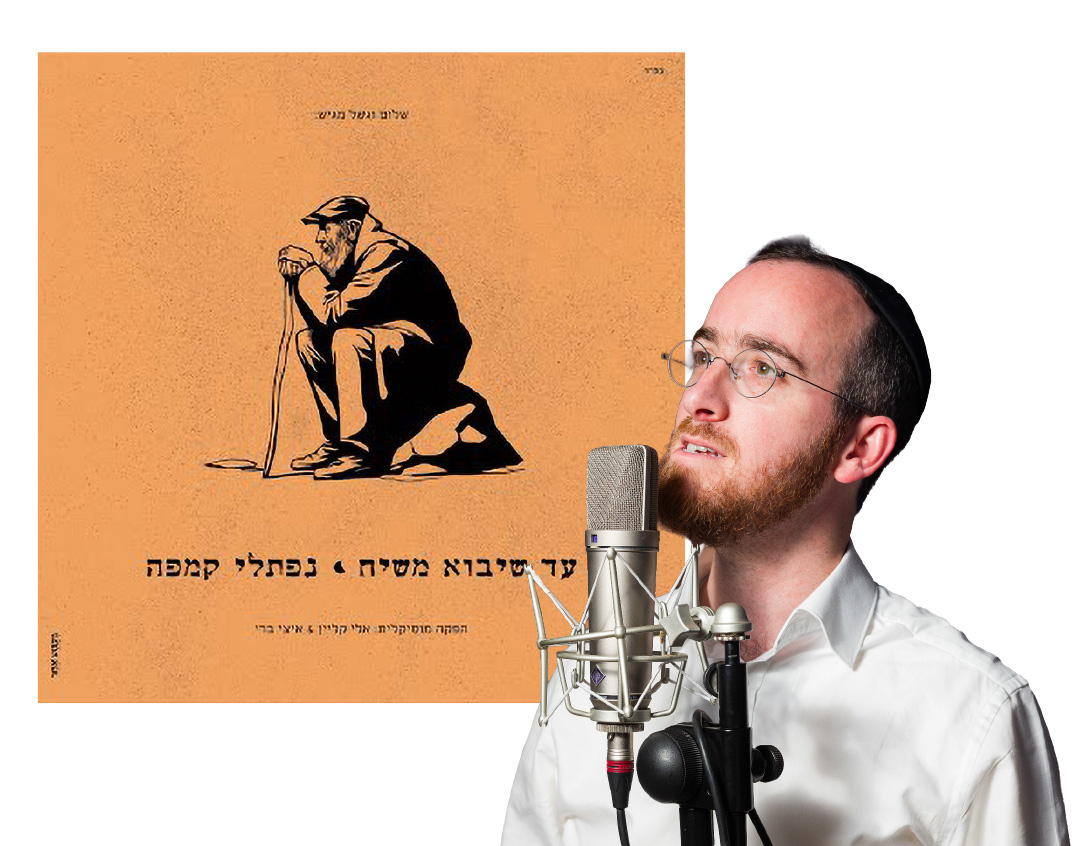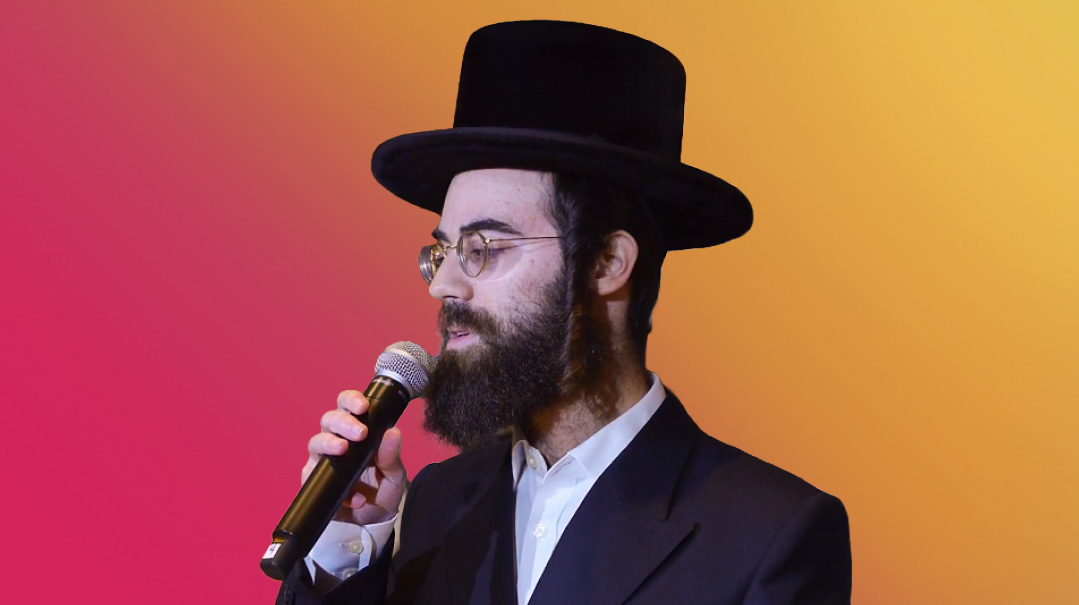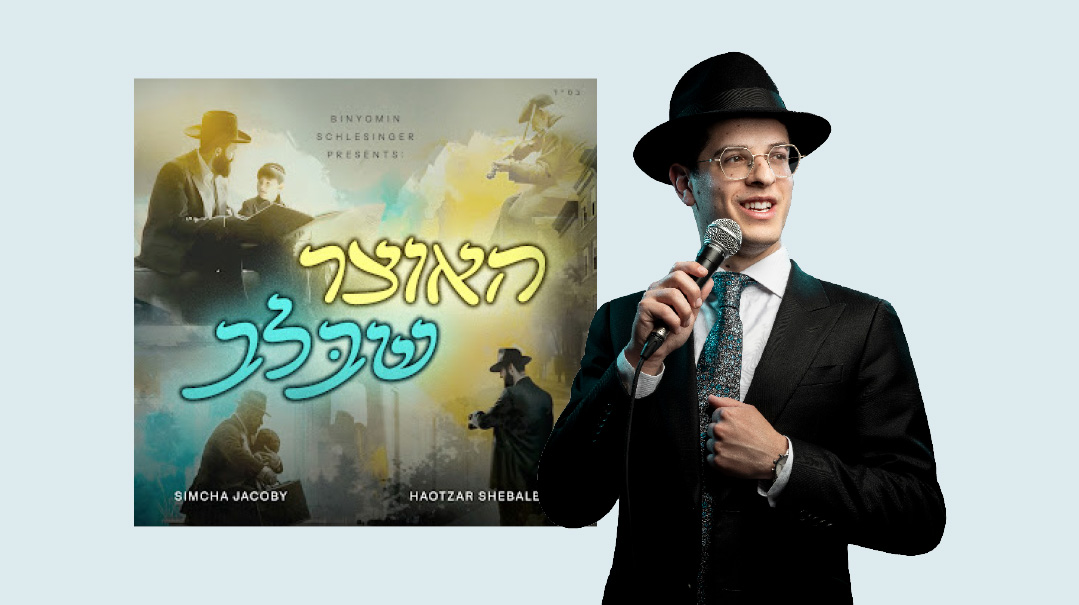Mood Mix with Mendy Worch
| December 6, 2022His newest single, “Rebbe Tell Me,” is due for release on Chanukah

Back in 2016, around the time when the crowds were beginning to flock en masse to Reb Shayele’s kever in Kerestir, MENDY WORCH collaborated with Motty Ilowitz and Baruch Sholom Blesovsky to put out his first song, “Kerestir.” Several years before that, he’d spent Shabbos in this Hungarian town from where his grandparents came, having made his first visit there when Kerestir had no running water and no infrastructure for visitors. He has since composed for Yaakov Shwekey, Yehuda Green and Dudi Knopfler, and together with the TYH team, made a splash with “Every Yid’s a Big Tzaddik.” His newest single, “Rebbe Tell Me,” is due for release on Chanukah.
A SONG THAT GETS ME INTO THE CHANUKAH SPIRIT
“Oy Chanukah Oy Chanukah.” It’s a very old song, composed around 100 years ago, with Yiddish words and a very happy vibe, and continues to make it across the entire spectrum of the Jewish world, with people playing and singing along to the Yiddish version even if they don’t know all the words. We Yidden love to use niggun to connect to the heart of a Yom Tov, and the idea that different times call for different niggunim is woven into the heart of our tradition. For example, the Shir Shel Yom was sung every day in the Beis Hamikdash to reflect the unique meaning and avodah of that day.
A COMPOSER I CONNECT TO
Industry veteran Yossi Green has definitely had the biggest impact — we grew up on the sound of his songs. Right now, I would say that Hershy Weinberger is making huge waves. He’s a contemporary talent with many hit songs over the past few years that have become part of the current Jewish music culture.
A SONG THAT GIVES ME CHIZUK
“Hatov Hatov Hatov” by Reb Bentzion Shenker. It reminds me to focus on all the good Hashem does for us. Reb Bentzion had a knack for writing tunes that we still love and dance to in 2022, but that are also appropriate for a chassidishe rebbe’s tisch. “Hatov,” for example, can be sung slow or fast, with dveikus or with energy. It’s comfortable in any mode and for any crowd.
THE BEST SONG TO WARM UP A CROWD
The holy Berditchever Niggun. Works every time.
A SYMPHONY OR A KUMZITZ?
Definitely a small kumzitz. There are few things as powerful as singing a niggun with a connected and tuned-in chevreh.
WHAT WE SING AROUND MY SHABBOS TABLE
My kids and I love to sing original tunes. I compose, and the children help me with their suggestions, so that we really personalize our Shabbos zemiros. I hope to release some of these niggunim for the public in the near future. Besides our own, we sing Yitzchak Fuch’s Menuchah Vesimchah and the classic Kah Echsof, and we often sing “Ven Ich Volt Gehat Koach...” or that same tune to its Hebrew words “Mikolos Mayim Rabim.” It helps put us in Shabbos mode.
MY MOST UNLIKELY HIT
I was playing music at a siyum, when Rabbi Mordechai Jungreis — the Nikolsburg Rebbe and rav of the Woodbourne shul — walked in. Not very seriously, I started to play a song that the Rebbe teaches his kindergarten class every year for Parshas Noach, “Noach was a big tzaddik, from his keppele to his feesele…” The Rebbe started to sing, and I could see the crowd connect to this holy Yid and his love for everyone. Then Hashem put more words into my head, and I began to improvise a higher part of the tune, singing “Every Yid’s a big tzaddik, the Rebbe is a big tzaddik....” Of course, someone took a video and posted it, and the next day, my good friends the Blumstein brothers called me and insisted we record this song professionally. My initial thought was that the song was too childish for anyone to take seriously, but they insisted. While we were in the studio, the song fragment “ve’ameich kulam tzaddikim” came to mind, and since it fit the message exactly, we decided to include it. What we only realized afterward was that Rabbi Jungreis had actually composed that teniyeh thirty years ago, so we knew that we were onto something special. With no music video and no sophisticated marketing, this simple song has become an anthem for Klal Yisrael. What a zechus to be part of such a positive message!
THE ONE ALBUM I’D TAKE ON A LONG ROAD TRIP
The 8th Note by Yossi Green, which in my opinion is one of the best all-around albums ever produced. The songs are message-driven around the beautiful themes of Geulah and Mashiach. They are sung by a diverse range of top singers, such as Ohad and MBD and Avraham Fried and Helfgott and Gertner and Lipa and Schwebel, so you can listen again and again without getting bored, and the production, by Yossi Green and Yossi Tyberg, is way ahead of its time.
A STYLE I WISH WE COULD BRING BACK
Jewish music tends to stay within its comfort zone, so the styles evolve slowly, and a lot of songs wind up being very similar to each other. One style that was so refreshing, and I’d love to see again, is the Piamentas’ music. Yosi a”h on his guitar was all rock and roll, while Avi brought the klezmer sound in with his flute. The fusion of the popular, aggressive genre with something Yiddishe and warm was unique and I loved it. In my own music, I try to fuse up-to-date music with the old-time niggun quality, something that makes a song not only fun to listen to but singable and “farbrengable.”
SOME UNFORGETTABLE ENGLISH LYRICS
Uncle Yossi’s classic “Hashem is here, Hashem is there, Hashem is truly everywhere,
Up up, down down, right left and all around, here there and everywhere….” It’s vintage and so simple, but really says it as it is.
MY BIGGEST CHALLENGE AS A SINGER
The singer sets the tone for the entire room, so I always feel a huge responsibility. If you sing with energy, the room is energetic, if you sing with a Yiddishe hartz, the room feels geshmak, and if you sing farshluffen, the room will be farshluffen. It’s not only the voice, but the feeling and energy behind it. Even how the singer pronounces the words is important — the listeners can hear the emphasis and focus, and if he is focused, it drives home the meaning of the song so much better.
(Originally featured in Mishpacha, Issue 939)
Oops! We could not locate your form.







